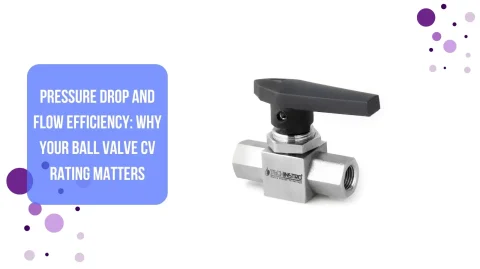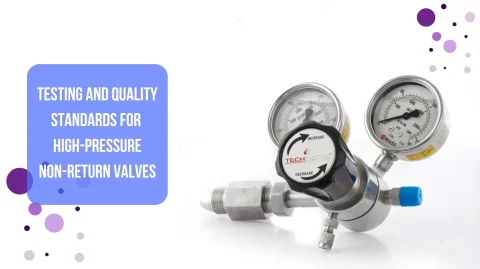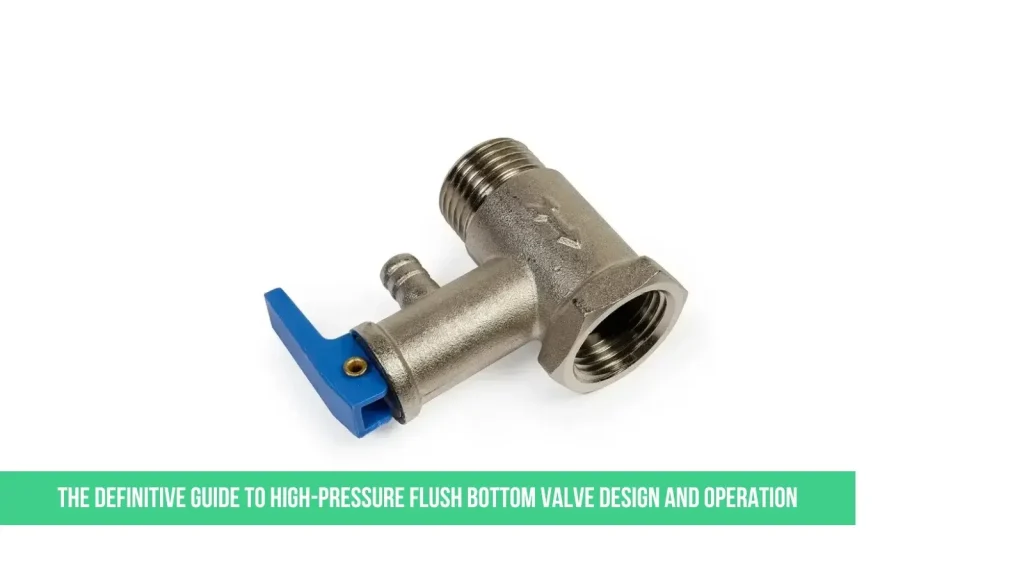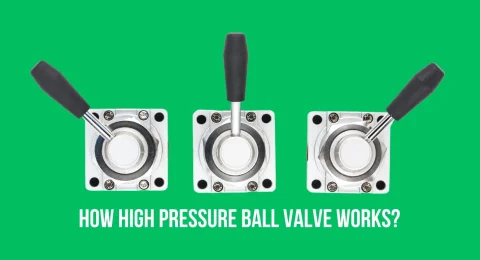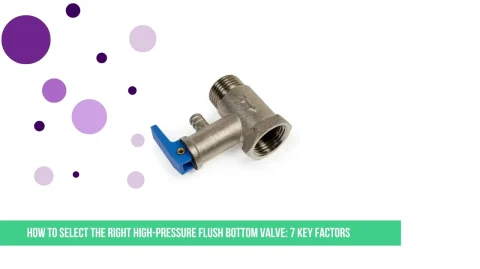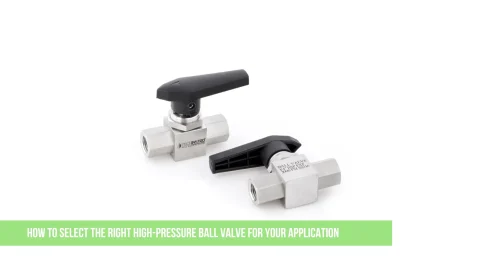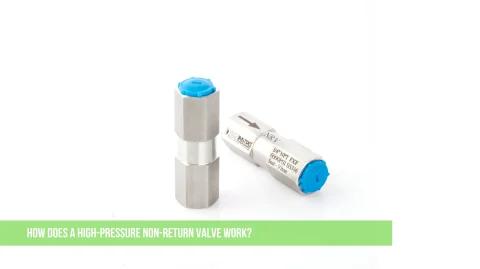If you work in industries like pharmaceuticals, chemicals, or food and beverage, you’ve likely seen a reactor or mixing tank with a valve that sits perfectly flush with the inside of the vessel. This isn’t just any valve; it’s a flush-bottom valve (also known as a bottom-outlet valve or tank-bottom valve). Its job is critical: to fully drain a vessel without any dead space where product can get stuck.
When that vessel is under high pressure, the design and operation of this valve become even more crucial. This guide breaks down everything you need to know in simple terms.
What is a High-Pressure Flush Bottom Valve?
Imagine trying to get every last bit of thick cake batter out of a mixing bowl. A spatula that fits the curve of the bowl perfectly works best. A flush-bottom valve is the spatula for industrial tanks.
A high-pressure flush bottom valve is a specialized valve installed at the very bottom of a pressure vessel. Its primary purpose is to provide a complete, unobstructed drain path for the vessel’s contents while being designed to safely contain the high internal pressures, which can range from hundreds to thousands of PSI.
Key Problem It Solves: Dead Legs
In a standard valve connected to a pipe, a small area between the tank wall and the valve seat can trap material. This trapped material, or “dead leg,” can:
- Contaminate the next batch.
- Create a breeding ground for bacteria.
- It is difficult to clean, requiring complete disassembly.
- becomes a safety hazard if the material is reactive.
- A proper flush bottom valve eliminates this dead leg.
- How It Works: The Basics of Operation
- While designs vary, the operating principle is similar across most high-pressure flush bottom valves: a plug moves up and down to seal against a seat that is perfectly flush with the tank interior.
To OPEN the valve:
An actuator (manual, pneumatic, or electric) rotates a stem. This rotation lifts the valve plug vertically away from its seat, creating a clear, straight-down path for the product to flow out. There is no lateral movement that could create erosion or trapping points.
To CLOSE the valve:
- The actuator reverses, driving the stem and plug downward until the plug presses firmly into the seat, creating a tight seal that can withstand the high pressure from the vessel.
- The Key Takeaway: The sealing happens inside the tank wall, not in a pipe below it. This is what makes it “flush.”
- Key Design Features for High-Pressure Applications
- Not all flush bottom valves are created equal. High-pressure models feature specific design elements to ensure both safety and optimal performance.
Actuation Method
- Manual: A handwheel is used for smaller valves or lower-pressure applications and is not recommended for large, high-pressure valves due to the force required.
- Pneumatic (Air-Actuated): The most common method. Compressed air powers a piston to reliably and quickly open and close the valve. This allows for remote operation and integration into automated control systems.
- Electric: Used where compressed air is not available. Provides precise control but is often slower.
The Seal & Seating Design
This is the heart of the valve’s high-pressure capability.
- Materials: Seals are made from robust, pressure-resistant materials like PTFE (Teflon), PEEK, or resilient metals.
- Metal-to-Metal Seals: For extreme pressures and temperatures, the plug and seat are both precision-machined from hard metals (like Satellite) to create a perfect, leak-tight seal.
- Spring-Loaded Design: Many high-pressure valves use a spring to assist in sealing. The spring ensures constant, even pressure on the seal, compensating for wear and thermal expansion.
Body and Connection
- The valve body is typically made from high-grade stainless steel (316/316L) or other alloys compatible with the process material and pressure.
- Connections to the tank are usually a weld neck or specialty flange to ensure a strong, leak-proof joint that can handle mechanical stress and vibration.
Cleanability (CIP/SIP)
- CIP (Clean-in-Place): The smooth, flush interior and lack of cavities allow cleaning solutions to flow freely over all surfaces, ensuring no product or detergent is left behind.
- SIP (Steam-in-Place): The valve must be designed to handle the high temperatures and pressures of steam sterilization without leaking or failing. This often requires special gland packing and stem seals.
Critical Considerations for Selection and Use
Choosing the correct valve is vital. Here’s a simple checklist:
- Pressure & Temperature Rating: The valve’s rating must exceed the maximum expected pressure and temperature in your process.
- Material Compatibility: The valve’s wetted parts (body, plug, seat) must be compatible with your product to avoid corrosion or contamination.
- Viscosity & Particle Size: Are you draining water-like liquid or a sticky slurry with abrasive particles? This affects material choice and required bore size.
- Actuation: Do you need to operate it manually, or should it be automated? Pneumatic is standard for integration with PLCs.
- Industry Standards: Does it need to meet specific standards like ASME, FDA, or 3-A Sanitary Standards?
Operation and Maintenance Tips
- Never Force It: If the valve doesn’t open or close easily, stop. Forcing a manual handwheel can break critical internal components.
- Regular Inspection: Check for signs of wear, leakage, or damage to the stem and actuator.
- Follow a Schedule: Establish a preventive maintenance schedule to inspect and replace seals and springs before they fail.
- Lubrication: If required, use only the manufacturer-recommended lubricants that are compatible with your process.
Conclusion
A high-pressure flush bottom valve is a precision engineering component designed for safety, efficiency, and cleanliness. By providing a perfect seal against high pressure and eliminating dead space, it ensures complete product recovery, prevents cross-contamination, and simplifies cleaning.
Understanding its simple operation and robust design features allows engineers and operators to select the correct valve for their application, ensuring a reliable and safe process for years to come.
